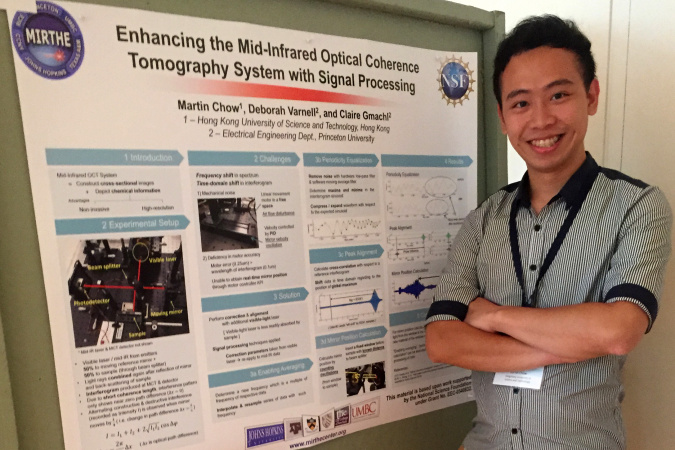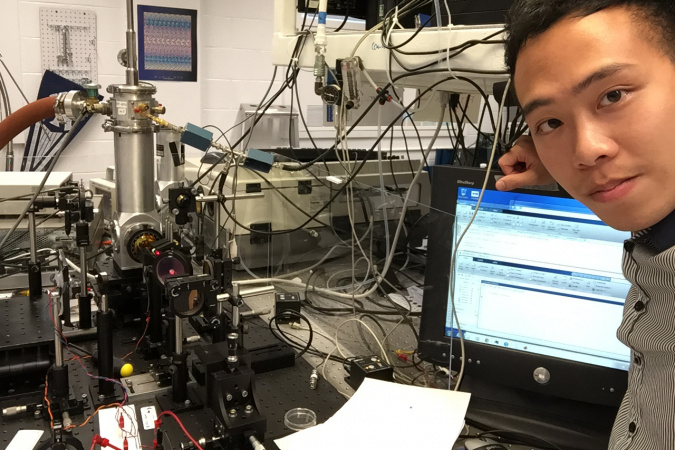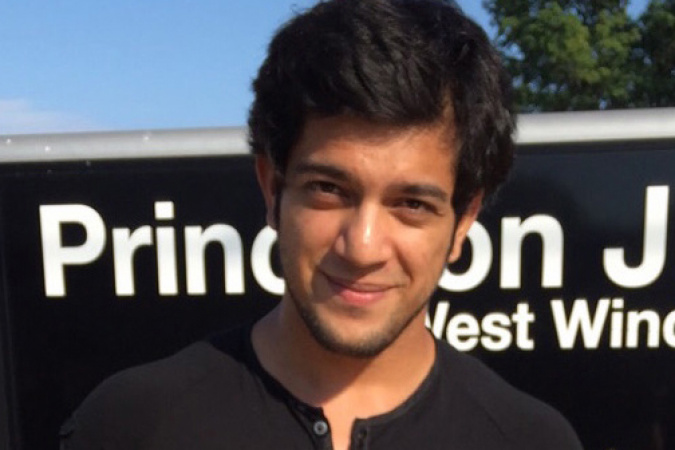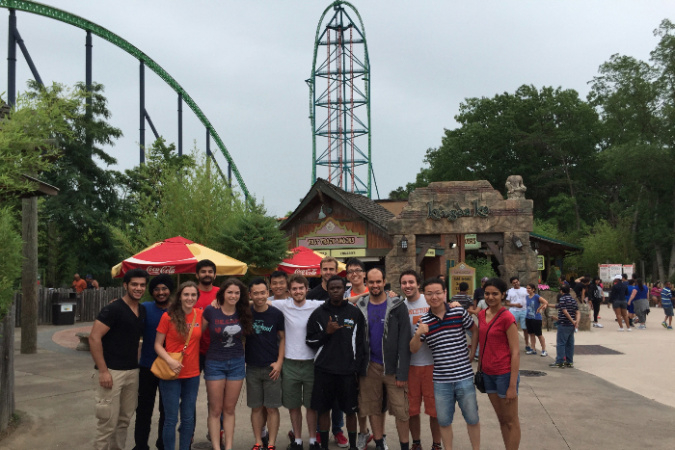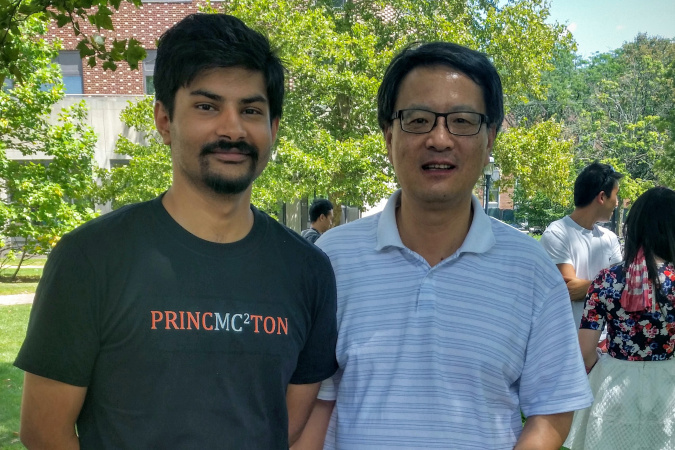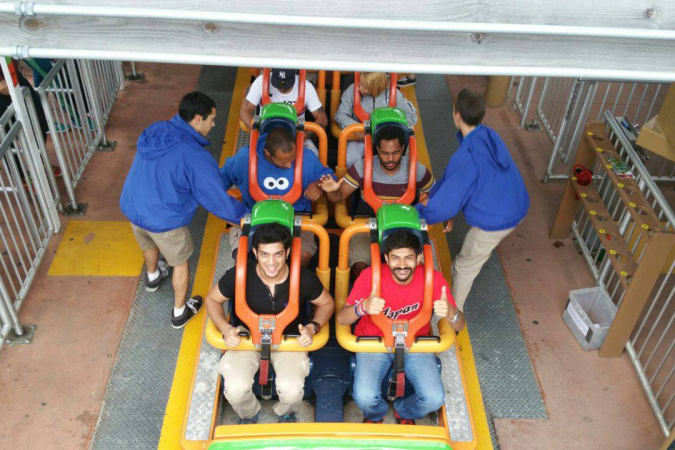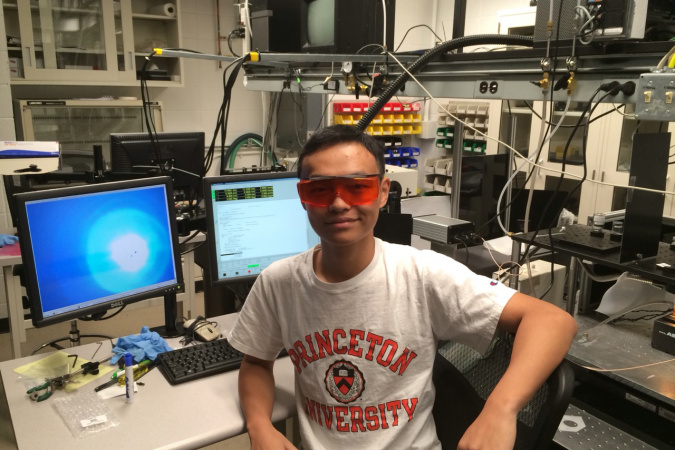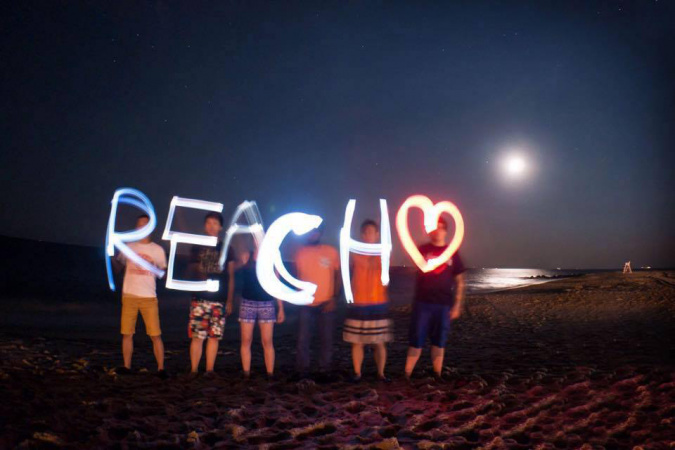Princeton 2015 Student Sharing
CHOW Ho-Yin Martin (Dual Degree in Computer Engineering and Business Management)
Princeton Supervisor: Prof. Claire GMACHL
Department: Electrical Engineering / MIRTHE
This was an extremely awesome experience to carry out research in Princeton University. I was following Prof. Claire Gmachl in MIRTHE and worked closely with a PhD student together for my project.
MIRTHE is a research institute lead by Princeton University for developing mid infrared technologies. They are primarily using semiconductor optics, aiming at the applications in health and environment issues. Having been established for more than a decade, it spans among eight prominent universities, like Rice University, Texas A&M and etc. As I am not a physics major, my topic is more in the application. I was working to build (more exactly enhance) a mid-IR optical coherence tomography system with a newly developed laser device invented in our laboratory as the core.
Mid-IR OCT is an imaging system for constructing cross-sectional images for biological tissues. And what’s more in our system, we can obtain the chemical information of the sample from the absorption spectrum, while the spatial information implied from interferogram peaks. Previous work was able to give precise interferogram peaks of cross-sections with mirror sample for mid-infrared laser. However, the spatial information obtained is not that accurate. There was no way to exactly calibrate the interferogram peak positions, since there exists a mirror as a moving part in our experimental setup. Therefore, we added in a visible light laser to do alignment, in order to avoid the cases that mid-IR laser is absorbed. This part was challenging because the wavelength of visible laser is much shorter and the errors that existed previously got amplified. We first made a lot of attempts to enhance the experiment, such as constructing a reference peak with reference window. Then, to further minimize the mechanical errors, several signal processing techniques including peak alignment, equalization of periodicity and interferogram averaging over different parameters were applied. These enhancements and algorithms made a nice step for the further development of the system prototype.
Other than research, the life in Princeton was also very remarkable. Thanks to Keller Center, there are a lot of useful seminars to let us explore more. There was a large variety of topics ranging from the latest results in different research fields, to how to excel in research and useful information regarding graduate schools. In addition, they arranged mingling events with eLab students so we could widen our social circle beyond researchers, and hung out with them. Also, exclusively for MIRTHE, they organized symposium and workshops so it was easier for us to get started and those events were all equipped with free food (and even a fine dining opportunity during symposium) and networking events. Near the end of the program, there was a poster and presentation session to let us exchange information and know someone else’s work. So these events made it easy for me to get to know more people that worked with similar aspirations with me. As many of us may pursue graduate programs in the US, we obtained and discussed a lot of first-hand information there.
Moreover, in the REACH program (a research program for international students like us), we got a very tight bond among ten of us, in which some of us are from Hong Kong, some from Germany and some from India. We loved to hang out with each other, talking about what is happening in our home countries and cities, ranging from academics, social norms and political issues too, and of course, fun and entertainment. In the weekends, we went on short trips to Six Flags theme park, Atlantic City, Cape May, New York and Philadelphia to explore the US. These short trips were enabled by the excellent geographical position and transportation network of Princeton. Going to those places may just take a couple hours of public transportation. All in all, it was an invaluable chance to work and live in such an international setup.
Aishwarya GAUTAM (BEng in Mechanical Engineering)
Princeton Supervisor: Prof. Athanassios PANAGIOTOPOULOS
Department: Chemical and Biological Engineering
During the Summer of 2015, I spent 8 weeks at Princeton University as part of the REACH program, working under the supervision of Professor Athanassios Panagiotopoulos in the Department of Chemical and Biomolecular Engineering. My research project involved the study of a microfluidic phenomena called Taylor Dispersion using Molecular Dynamics Simulation method. This involved writing codes in order to simulate particles in tubes, under different flow conditions and fluid properties.
Although I did not have a lot of prior experience with computation based experiments, my lab supervisors- Michael Howard (PhD student) and Arash Nikoubashman (postdoctoral fellow)- guided me to get used to the simulation methods. As I intend to pursue a career in the field of thermofluids, these two months were immensely useful to give me an idea of how graduate level research is conducted.
As for Princeton itself, upon arriving on campus, I was immediately taken aback by the bucolic beauty of the place. Almost all the buildings on campus were of high Victorian architecturally, which blends in with the overall vibe of the "Ivy league" status aptly. We stayed in a relatively modern (1950s) building, which had 4 single rooms, a living room and a kitchen in each apartment. The campus is not particularly large, mostly everything is within walking distance- Shops, libraries, gym, train station, etc. Princeton is also about an hour's train ride away from both New York and Philadelphia, which makes weekend getaways really convenient.
The six of us from HKUST were grouped with four other students from Germany, with whom we ended up forming really close bonds of friendship. We also had the opportunity to meet a lot of different students from various backgrounds through the activities organized by the KELLER center. Besides the weekly "Happy Hours" and other social gathering events, a day trip to the Princeton Plasma Physics Lab (PPPL) was also arranged for the Summer research students, which was a highly educational experience.
Overall, the eight weeks that I spent in Princeton were some of the most productive ones ever. Besides the invaluable research experience, I gained a much clearer understanding of my goals for graduate school and research interests. As the project also entailed a lot of literature review, it helped me hone my skills of reading and understanding scientific papers efficiently and quickly. Being an introvert, this was also a great opportunity for me to socialize with a lot more people than I am generally used to. I would like to thank HKUST School of Engineering and KELLER center, Princeton University for providing the opportunity to participate in such a prestigious and fruitful experience. I would also like to thank my research supervisor, Professor Athanassios Panagiotopoulos and my lab mentors for guiding me throughout the project duration.
LEE Wing-Hang Randall (Dual Degree in Civil and Structural Engineering and Business Management)
Princeton Supervisor: Prof. Michael LITTMAN
Department: Mechanical and Aerospace Engineering
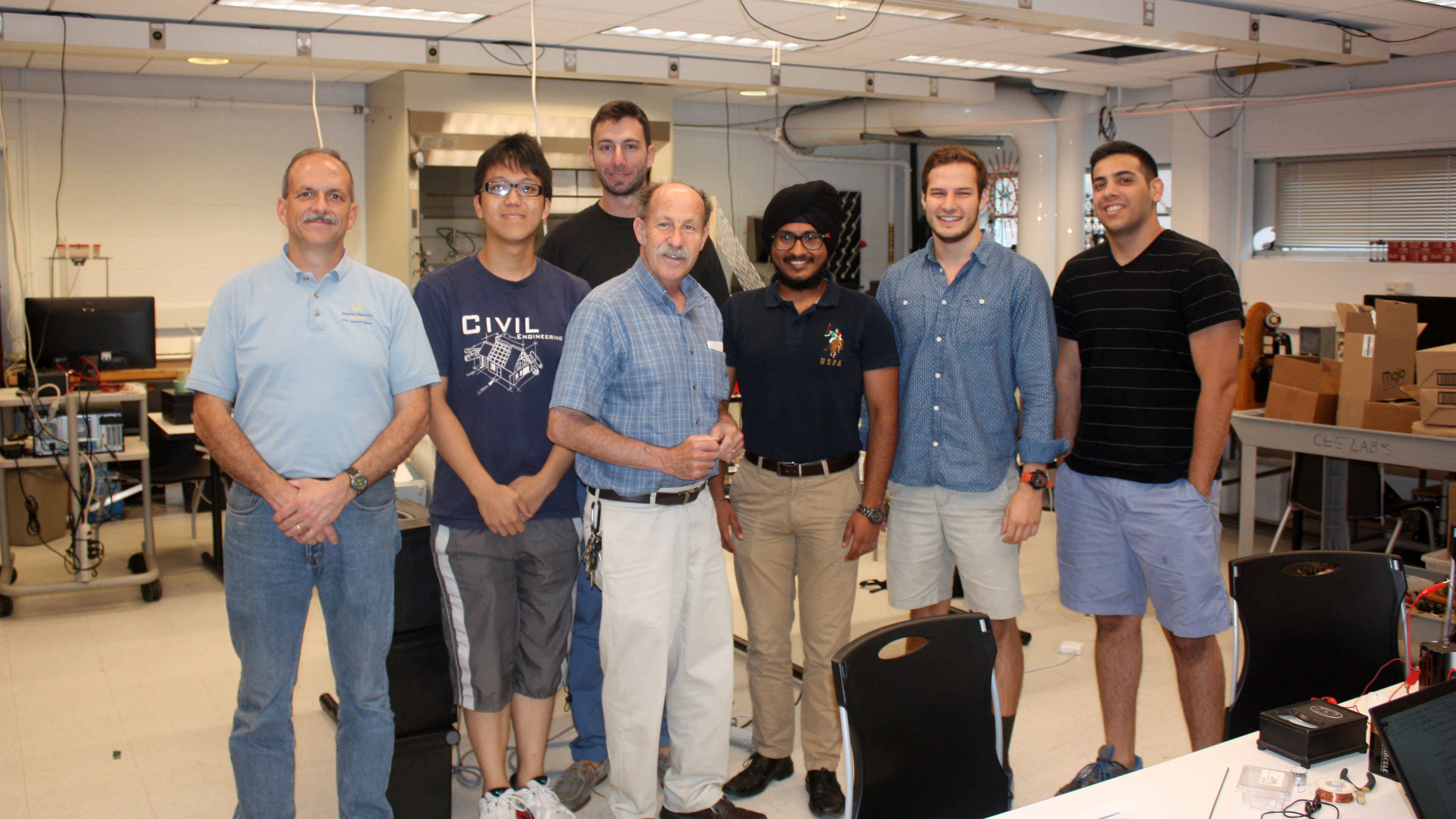
After knowing that I was given the chance to stay in Princeton University for a research-oriented program, I was really excited! The program was only 2 months but I told myself that I will stick with the goal that I came for – to do rigorous research, challenge my own mind, improve research skill and have fun!
The first few days in Princeton were relaxing, which was good! Since it was the best time to get familiar with the group and meet friends in America and other participants from Germany. Laboratory safety such as laser and chemical usage were highlighted in a series of seminars in the first few days. Lilian Tsang, the REACH program manager, gave us a tour of Princeton. The campus was really gorgeous. Although I kind of already knew the campus environment in US since I already went exchange to UIUC once, but Princeton’s campus was really impressive. Walking in the campus is nice, but stores and restaurants are little bit far away from Spelman Hall, where REACH and eLab students lived. I would recommend you to get a bike since it would offer you great convenience. You may bike to Walmart during weekends to buy some living necessities.
My project was about a thermoelectric device left by Prof. Joseph Henry in the past. At the beginning, I needed to go through a bunch of readings to find out related records of the device in a bid to identify it. It was believed to be used as the device for sunspot experiment carried by Joseph Henry. And I found out that it was wrong. That was like a “detective game”. However, though delighted by the fact that the device was identified, I want to find out how the device works and rigorously figure out the math and theory behind it. Under the encouragement and guidance by Prof. Michael Littman, it was done! I am also glad that Prof. Littman is going to publish the result.
For technical information regarding the project, please visit: http://www.princeton.edu/ssp/joseph-henry-project/thermo-electric/
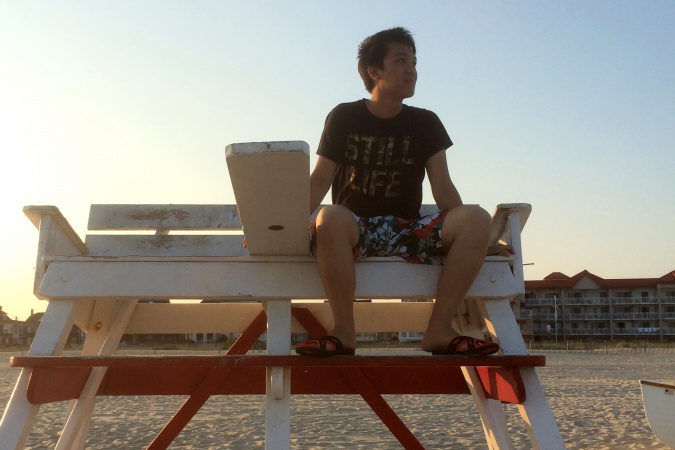
In Princeton, I do not recommend you to keep working all the times. Happy hours are held every week and I did not miss one. Those were the time that you get familiar with others and meet some new people. I usually asked what they did in their projects and exchange ideas with them. Prof. Littman also took his group to have “extra” happy hours on Friday sometimes.
The program offers a great opportunity to travel around. Prof. Littman took his group to Philly and DC for trips. Princeton is near some good places to visit like Philly, New York, Atlantic City, and Cape May. 4th of July is Independence Day for America, we visited Atlantic City on that day and the fireworks were awesome! The Keller Center also organized a trip for us to go to Six Flag, an amusement park, on a Saturday. The beach in Cape May is very beautiful as well.
Gursimran Singh SETHI (BEng in Electronic Engineering)
Princeton Supervisor: Prof. Michael LITTMAN
Department: Mechanical and Aerospace Engineering
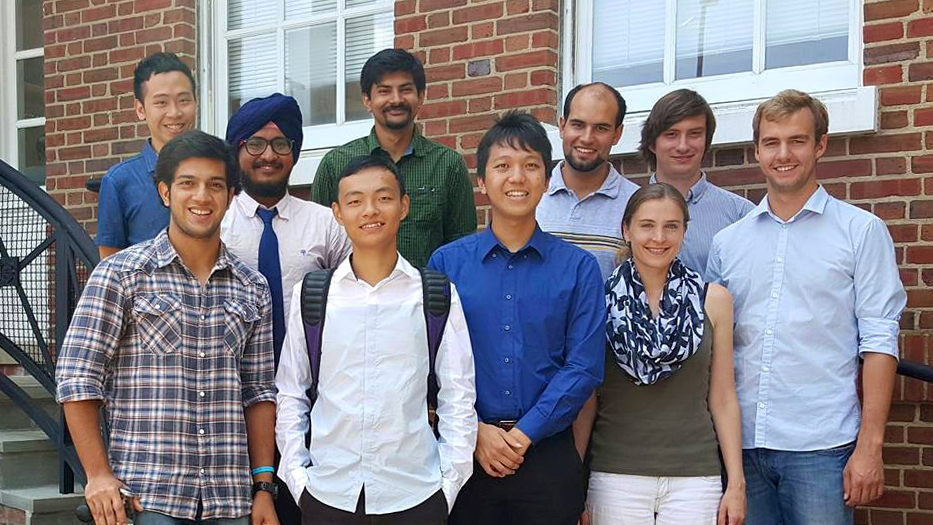
The hospitality of the Keller Center at Princeton was beyond excellence as we were invited to a grand barbeque in one of Princeton’s renowned Eating Clubs. This was also where we first met our Professors and advisors, who we would work with during the summer.
I had the honor of working with Professor Michael Littman, of the Mechanical and Aerospace Engineering. After briefly interacting with my advisor, Lukas Stern and colleague Mark Scerbo, I understood I would be in great company throughout the summer, and that I would learn a lot. Although Professor Littman could not make it to the barbeque, I met with him on the following day and he introduced me to the lab in which I would spend the rest of my summer.
His attitude towards students is extremely admirable as he carefully understood every student and assigned roles accordingly. He inquired about my abilities, skill and interests and we finally zeroed in on a project which would involve me investigating the coil noise, observed by Alexander Bell in the early 1900s and which eventually led to the invention of the telephone. On completion of this analysis, I would move on to 3D printing of different objects including circuit boards the lab was actively involved in. Additionally, I would start the development of new antenna resonators, both conventionally as well as 3D printed ones. Although all of this was not charted on the first day, I had the brief idea of what I would do.
In parallel to my work in the lab, the Keller Center regularly organized lab tours of the rest of the facilities in Princeton to motivate us for grad school, along with seminars about a variety of different topics including solar cells, high speed electronics and lasers. They even organized a visit to the Plasma Physics Laboratory of Princeton, which was an enlightening experience on its own.
My work was not just limited to the lab, Professor Littman also took us on two separate road trips to Philadelphia and Washington DC to attend a conference in Philly and work with the Smithsonian archives in DC. There too we achieved a lot, uncovering a lot of different equipment used by Alexander Bell and his contemporaries along with their use. Simultaneously, I worked on the CNC mill installed in the lab to rapidly produce PCB designs without the use of conventional etching process. I also had the opportunity to recommend new ideas to the group, including a suggestion to produce patch antenna resonators to improve the performance of Crystal Radios. This recommendation was heartily accepted by the Professor and the group and we started the production of these new resonators.
He even introduced me to Professor Sengupta and other established professors in Physics to see their research and the new achievements in their field. I was inspired by the new work they all were doing in their particular fields. It inspired me to pursue a PhD in the future to work on similar work in Mechanical or Electrical Engineering.
My major contribution to Professor Littman’s group was to characterize the coil noise observed by Alexander Bell and how it led to the development of the modern day telephone. I was successfully able to do the spectral analysis of the sound he heard from an empty helix and other resonating effects observed. I also successfully manufactured several circuits by the 3D prototyping method as well as producing a simple patch antenna resonator, which significantly improved the working and reception of Crystal Radios. In addition, I also made and analyzed several other types of resonators like the Ferrite Loopstick resonator and open air coil resonators. All of this work has been catalogued and can be seen on the following website.
http://www.princeton.edu/ssp/joseph-henry-project/henry-bell/
In the end of the program we all had the opportunity to showcase our work and achievements via presentations. We got to learn about each other’s work and how we worked to achieve what we achieved in a much greater depth. It gave us an opportunity to interact with other professors of our colleagues and understand their work and showcase ours to their critical eye. We made suggestions for future research projects and finally concluded our program in Princeton.
We even got an opportunity to see the adjacent cities of New York, Washington DC, Atlantic City, Philadelphia and Cape May over the Weekends. The Keller Center organized a trip to the nation’s biggest amusement park, Six Flags. We were fortunate enough to be in Washington DC for the 4th of July, Independence Day celebrations. We got the opportunity to view the grand fireworks near the Washington Monument and experience American culture firsthand. In New York, we visited all the touristy places like the Empire State Building, the Statue of Liberty and the Brooklyn Bridge. Philadelphia gave us a historical and cultural experience like no other. We visited the Franklin Institute in Philadelphia, indulged ourselves in delicious Philly Cheesesteaks among other delicious American cuisines. Atlantic City and Cape May gave us an amazing experience, a beautiful view of the sea and awesome Casino experience too! Finally, Boston, another college town was as inspiring as Princeton as we got the opportunity to visit institutions like MIT and Harvard. We were humbled to see the awesome institutes and the amazing natural beauty of Plum Island and Martha’s Vineyard.
All this would not have been possible without the support of HKUST which gave me this awesome opportunity to do research in an international setting. As a student of HKUST, I tried to make my university proud by working with my utmost diligence and potential. The experience at Princeton is absolutely invaluable purely due to the renowned professors, world class facilities and the friendly atmosphere. It has inspired me to further pursue research and work towards my dreams. I was particularly inspired by Professor Littman who in one of our several discussions about the role of engineers and universities in society said, “A great university like Princeton works towards the betterment of the world and not just the betterment of the technological world.” These words by my wise professor have inspired me and will always stick with me and motivate me to work as a great engineer for the society. Princeton is definitely therefore, a platform to learn new things, and obtain inspiration from the great people who have been associated with it like Woodrow Wilson and Albert Einstein.
Siddhant TRIPATHI (Mechanical Engineering)
Princeton Supervisors: Prof. YAO Nan
Department: PRISM - Imaging Analysis Center
My research work under Prof. Nan Yao, the director of Imaging and Analysis Center at Princeton, was mostly on Abalone shell nacre. I generally used atomic force microscopy to scan the surface of the shell and study the properties of the shell based on the images scanned. There are different modes of an atomic force microscope (AFM) which helped us map different surface properties. Among the different modes, I used the Conductive AFM mode extensively. This mode was used to map the current on the surface of the Abalone shell sample when the sample is subjected to a varied DC bias ranging from -10V to 10V. During my initial days, my advisor introduced me to AFM, teaching me the basic principle of operation of an AFM and the procedure of obtaining topographical images using AFM. Also, I occasionally used a scanning electron microscope if I wanted a larger scan area as the scan range of an AFM is limited. I had weekly meetings with my professor in which I reported my progress for the last week and based on that the professor guided me. I got regular help from my professor’s post-doc student who assisted me in handling the lab equipment and gave me the necessary training in order to use the apparatus. At the end of our research, each of us had to give a short 5-minute presentation about our work at Princeton to the members of the Keller Center and also other faculty members.
Apart from the regular lab work that the summer exchange students had to do towards their research, many other co-curricular and extra-curricular activities were planned for us. On the very first day, we were greeted with a short tour of the campus followed by a BBQ at one of the eating clubs in Princeton. Furthermore, there were lab safety trainings, web seminars and field trips spread throughout our two-month stay in Princeton. One of the most interesting trips was an excursion to Princeton Plasma Physics Lab (PPPL). We were given a guided tour of the facility along with a video explanation of how plasma is used in nuclear fusion. In addition to field trips there was also an outing to Six Flags amusement park organized for us by the Keller Center. This was specially thrilling as we got to experience the world’s highest roller coaster ride in which we had to put ourselves through 5Gs of acceleration. All this excitement and the adrenaline rush helped us to take a break from the monotonicity of lab work and refreshed us to continue our work with renewed energy and enthusiasm. To further enhance our interactions with people within the research program as well other faculty members at Princeton, there were weekly happy hours at locally famous pubs where we got to talk to our colleagues and professors in a casual setting.
Besides the official field trips and social activities, some of the students within our program planned and organized independent short trips to nearby tourist places like New York City, Philadelphia, Atlantic City, D.C. and Boston. These independent trips helped us discover the American culture and gave us deep insights into the people from different parts of America. The most memorable trip was to Washington, D.C. on 4th of July, the American Independence Day. We witnessed the independence day parade in which people not only from different parts of USA, but also from outside USA came out in large numbers to portray their rich cultural heritage. This portrayal was not only limited to the ethnically American population, but also immigrant population. The entire city was in a cheerful mood and many people had gathered at the National Mall to attend the evening concert by the Navy band followed by the fireworks. The fireworks held near the Washington monument ended the Independence Day on a high and in a grand manner. Being an international student in Hong Kong itself and then going on an exchange, I got the opportunity to compare the two international cultures. Generally, the people in the US are affable and helpful, akin to the people in Hong Kong. To me, the people of the US are easy-going and unruffled, living each day at a time without worrying much about the future. This mentality is in contrast to the belief in my own country, India. Indians prefer future planning in order to tackle any vicissitudes that may come their way without a warning. Apart from these major cultural differences, there were small differences like the US is a right-hand drive country, people do not use metric system for measurement, and petrol is termed as gasoline and abbreviated as gas, which can sometimes be confusing. Now, after having experienced the cultures and traditions of three countries, I have an enhanced perspective of people, which has helped me improve my personality.
Conclusively, this program proved invaluable to me as it helped me enhance my research skills by providing me an opportunity to conduct research in an international and multicultural scenario. It also enhanced my knowledge base as the project that I worked on was new to me, hence I had to do some literature review in order to familiarize myself with the topic. Furthermore, being in a multicultural environment, it also helped me improve my social skills through interactions with different people. Thus, this program added value to my repertoire of academic and social skills bringing me one step closer to having a holistic outlook.
YAO Yuan (BEng in Mechanical Engineering)
Princeton Supervisor: Prof. Craig ARNOLD
Department: Mechanical and Aerospace Engineering
During this summer, I had an amazing and fruitful 8-week research experience in Princeton University, which enormously broadened my international horizon and improved my research skills. In this REACH program held by Keller Center, I had an opportunity to do research with Professor Craig B. Arnold about laser machining using tunable acoustic gradient (TAG) lens, which is a liquid-based lens capable to change focal length rapidly. Basically my task was to set up optical experiment using TAG lens and ultraviolet laser to incise silicon wafers as well as many other materials to investigate how the axial scanning of TAG lens will facilitate material machining process. We proved, through varied machining experiments that TAG machining showed dramatic facilitation on square drilling performance in terms of hole shape, dust clearance as well as drill-though area percentage. These profound results can make a big difference on current machining process of electronic devices and product casing, which gave me the opportunity to publish those results as the first author after this summer program.
Honestly speaking, I knew nothing about laser processing and optical experiment beforehand; however, Prof. Arnold and other mentors guided me through all the processes patiently at the beginning, especially lab safety and laser training. They were so responsible that they never left us alone using laser in lab and they would make sure there were people around whenever I met a problem. Before long I was able to design experiments by myself and implement my own ideas, but it was always helpful to discuss results with fellow students or mentors for suggestions. Apart from daily experiments, Prof. Arnold also brought us to visit his own TAG lens company, which shows its various industrial applications, it turned out to be rather impressive to me since it gave me an idea on how my research is related to industry and how it makes a difference in the real world.
Although the research itself was enjoyable and rewarding, what was most memorable are the friends I made and the things I learned. In Prof. Arnold’s lab, everyone is more than helpful and accessible, they regarded you as a true scholar instead of an undergraduate student and they respected every single new idea from you. I can still vividly recall that during weekly group meeting, we shared ideas and gave valuable advice to each other. Although we came from all over the world and had all kinds of English accents, it was a great opportunity to respect different cultures, broaden international visions and pick up language skills. Apart from such colorful social interactions within the lab, we also had a short coffee break every day at 4pm and a free “happy hour” every Wednesday night held by Keller Center, most of the time there was a bar gathering for summer research students, and we even went to New York once to meet up and chat with Princeton graduate students. Such treasurable privileges enable us to experience American culture and set up connections with a diversity of outstanding students. Via all those social events, we built up solid friendships among all the students in REACH program, and we even travelled to Atlantic City, and Cap May together during weekends.
In addition, I truly suggest future students to step out of their comfort zone and chat with those amazing people you meet around the lab and all kinds of gatherings, many of them have extraordinary experiences and opinions that can largely shape your career plan or give insight to your field of interest. For example, I met a postdoc in Arnold’s lab who was working in IBM Research in Silicon Valley and I learned the difference between research experience in big company and university as well as how to choose the field of interest that suits you best. Secondly, grab this opportunity to ask graduate students around, especially your supervisor, for advice about graduate schools in the US and their opinion about master or PHD degrees. They know about these much better than we do. Thirdly, travel and make friends as much as you can, never waste those weekends since there are very beautiful beaches and adorable cities around Princeton to travel around, which can become one of your most memorable moments in your life. Last but not least, make full use of Princeton University resources. As REACH students, we have many privileges like free gym, Princeton VPN and many other student discounts. Even on campus there are many beautiful and historical architectures and comprehensive art museum to explore around.
To conclude, I’d like to take this opportunity to express my gratitude to School of Engineering, Keller Center and Prof. Arnold’s group for their extensive support. It has been a very fruitful and life-changing experience for me and I sincerely recommend future students to take part in this summer exchange program.

